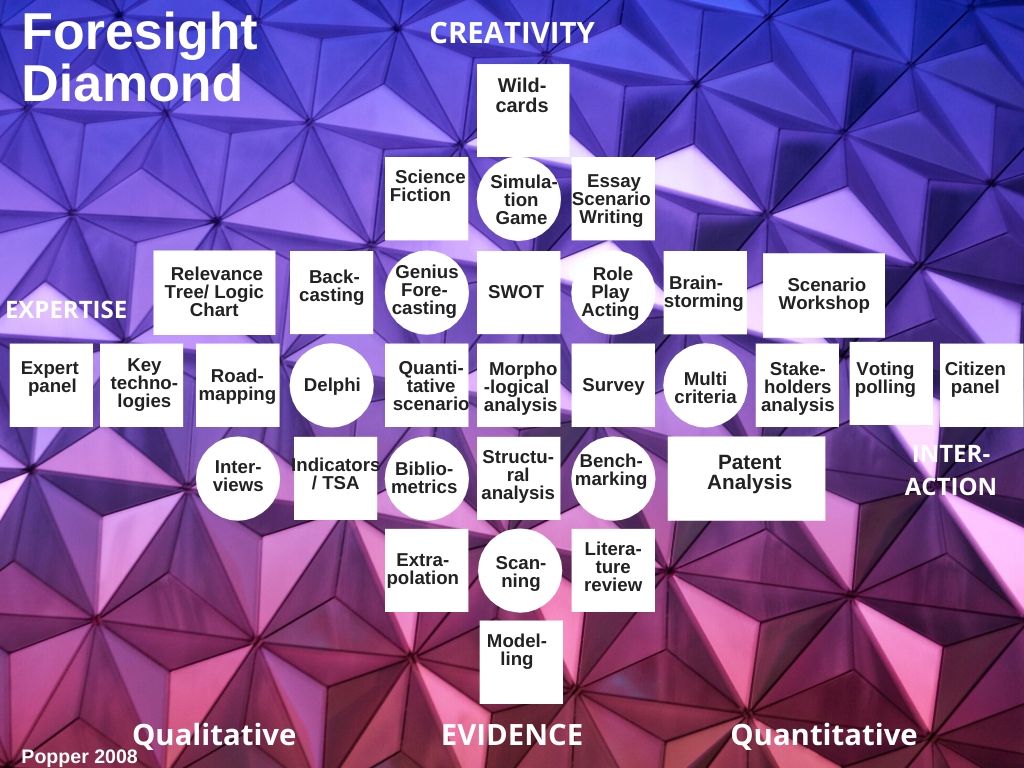How to build your future? With Foresight (prospective)
The prospective approach is ideal for anticipating the future, defining the company’s vision in the broadest sense, building a long-term strategy for a sector, a company or a territory and/or driving change. It will therefore helps with:
- ecosystem, drivers, actors mapping, phenomena and trends identification
- scenarios building for the possible futures
Foresight Definition
« Foresight is anticipation to inform present action (the decision) in the light of possible and desirable futures » as defined by Mr Godet.
Le futur est plus à construire qu’à prédire
Gaston Berger, the father of foresight (and Maurice Béjart)…
Tools & Techniques
Foresight methodology exploits tools and techniques used in other disciplines. These ones are indeed illustrated in the Popper diamond.
Firstly, where a couple of techniques focus on creativity, other ones focus on facts. Secondly, as for the approaches, they can be expert or rather collective. Thirdly, they evolve on a qualitative and quantitative axis.
As a result, there are a lot of options to choose from!

Prospective Approach Steps
Let us start with setting the problem … and the questions to answer
Here again, it will be important to define the scope of the project in terms of theme, territory (geography and nature), temporality, objectives, … and, as for any project, in terms of budget and deadline.
Tme will come to choose an approach amongst the numerous ones: exploratory, strategic, visionary, procedural or prescriptive
As next step, we will carry out a state of play by identifying the actors and drivers of change. We will afterwards map them on a system, according to their degree of influence
We will conduct surveys of participants: experts, citizens, mixed group, … and as a result formulate hypotheses of evolution The collection of information can of course be carried out using various techniques: interview, questionnaire, workshop, … It is important to note that these are indeed hypotheses and not forecasts!
At this stage, we can build scenarios based on a heuristic, morphological, bifurcation method, … by thinking as broadly as possible and without constraints. By the way, Risk Management also adopts this approach to building scenarios with « worst case » and « best case » scenarios.
Among these futures, we will explore those that are possible and desirable.
Time has come to define strategic options
And to finally Lead Change!